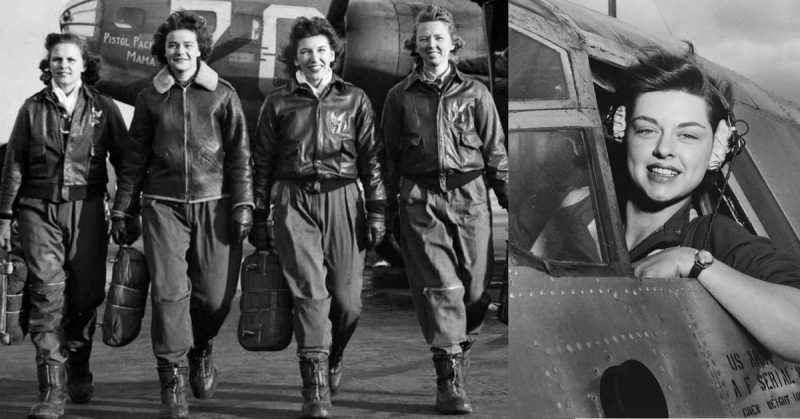
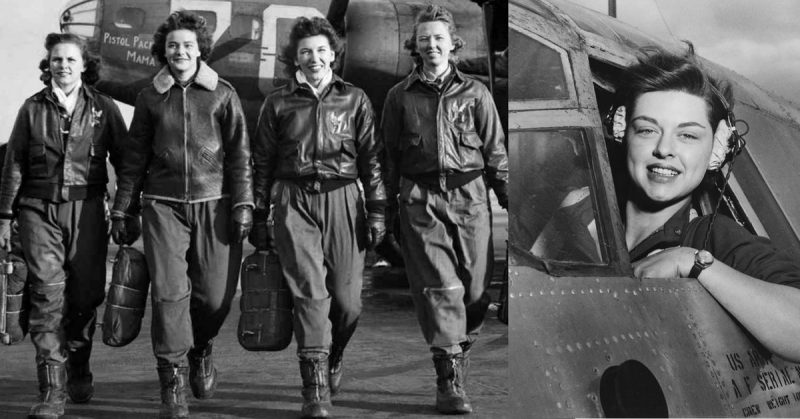
Left: Women Airforce Service pilots Frances Green, Margaret “Peg” Kirchner, Ann Waldner and Blanche Osborn, leave their B-17 Flying Fortress aircraft, “Pistol Packin’ Mama,” during ferry training at Lockbourne Army Airfield, Ohio, 1944. Right: Elizabeth L. Gardner, WASP, at the controls of a B-26 Marauder.
Larned, Kansas, native Lucile Doll Wise knows better than most what Women’s History Month – she was part of history, during WW II. Wise was a pioneer for female soldiers and an auxiliary Airforce pilot during World War II. Responding to the September 1942 need for pilots after Pearl Harbor, Gen. Henry H. Arnold established the Women’s Auxiliary Ferrying Squadron (WAFS) and Women’s Flying Training Detachment (WFTD). The WAFS and WFTD combined forces on July 5th, 1943, to form the Women’s Airforce Service Pilots (WASPs). According to Wise, their delineated mission was to perform routine flying duties that would relieve the male pilots for their overseas combat service.
Wise joined the WASPs in May 1943 and continued her service until the group disbanded in 1944. She remembers her time with them fondly. The prospect of flying military aircraft, which were larger and faster than anything she had flown before and she was delighted to have the opportunity to contribute to the war effort.
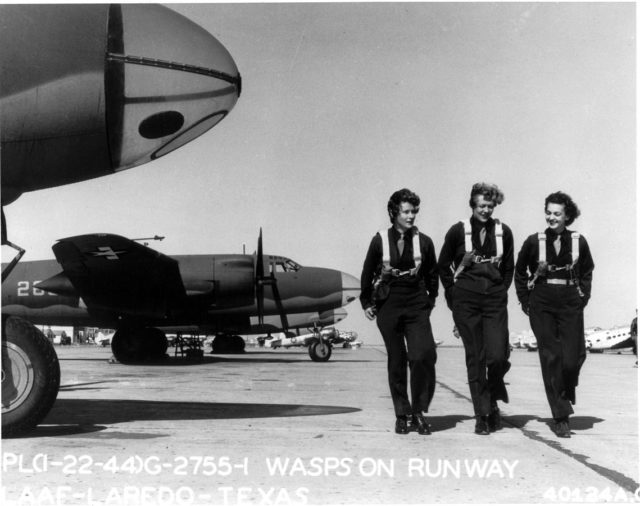
Wise was not the only member of her family to serve. Her younger brother forfeited the last semester of his high school education to join the Navy in 1943. Wise explained how worried everyone in the family was when her brother departed. Despite returning unharmed, it appeared he suffered some emotional damage from combat.
Wise suffered the same pains and relished in the same joys as her male counterparts while living in military barracks, learning to march, and making beds “the Army way.” Of course it was a bit of culture shock as well. It took some time to get used to the fact that she had given up her comfortable home, nice clothes, and full social life. Wise never complained, though, because she was just thrilled to have the opportunity to fly military aircraft.
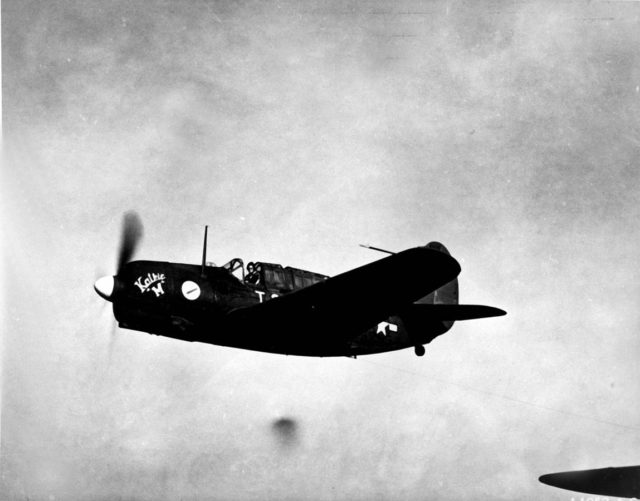
Following her graduation, Wise was assigned to the Army Air Force Weather Service Redion in Kansas City, Missouri. The women performed an array of domestic flying duties. However, the first and most important job was ferrying aircraft from factories to air bases and points of embarkation. In the two years they operated, they delivered more than 12,000 aircraft. This was a significant help at a time when there was a major shortage of pilots.
The twin engine C-47 Cessina Wise flew was slow but dependable. Later, when another WASP joined Wise in Missouri, they got the larger Beech C-45. They received an assignment to fly the weather officers wherever they needed to go, usually on inspection trips to all of the regional Air Force bases and to meetings. Most of the WASPs adored the AT-6 [Texan] most of all. They flew this spectacular plane in advanced training.
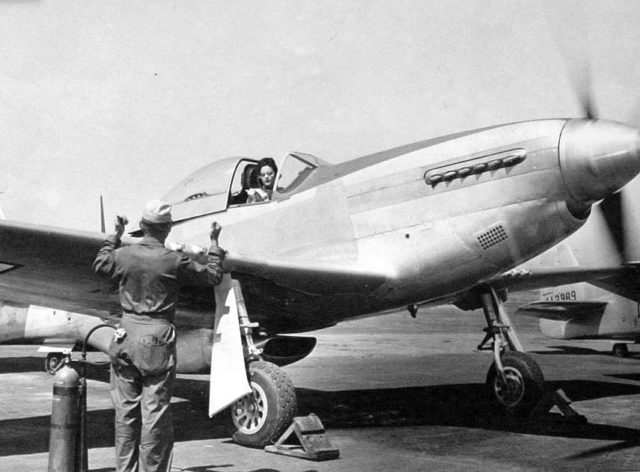
Wise began her WASP career with 50 hours behind the throttle. These hours pale in comparison to the 700 she amassed while in the WASPs, prior to the program’s disbandment.
Wise explained that during travel they would stay in nurses’ quarters, but sometimes were able to stay in hotels. There was one Nebraskan base that had no women on base or hotels in the town, so she used the next best option – a room in the hospital on base. A typical trip would run over the course of four or five days. They would spend one day at each of the many air bases across a large seven-state region. Wise loved every minute of the trips, but it was not always easy. The hard work would start on Monday and wrap up toward the end of the week, which left everyone pretty tired.
Gen. Arnold, in an attempt to get the WASPs into the fight, tried to militarize the group. Unfortunately, they were disbanded by Congress before Arnold’s (and Wise’s) aspirations were fulfilled. The nice uniforms and officer privileges were appreciated, but Wise wanted to be militarized and paid for her work. These women were making history as the first United States women to fly military aircraft, and they were working really hard along the way.
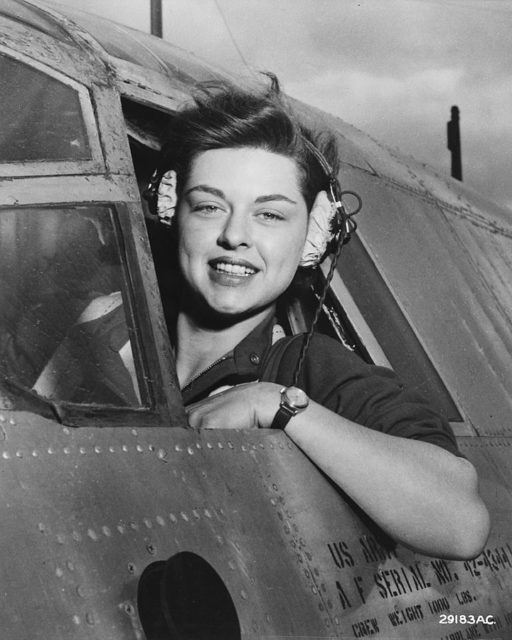
Inexplicably, the WASPs could claim status as Airwomen, but not veterans, for 33 years. Additionally, their records were classified and sealed from the public. After years of lobbying after the war, President Jimmy Carter signed a law granting WASPs their deserved titles as veterans and accompanying benefits on November 23, 1977, the same year the Air Force graduated its first female pilots.
Wise described the news as wonderful. She was living in the Washington, D.C. area at the time and helped with the lobbying effort. They got to attend a hearing and have direct contact with congressman. Some of the women did not have health insurance and were in financial trouble. Therefore, it was extremely helpful to now be eligible for treatment at military hospitals.
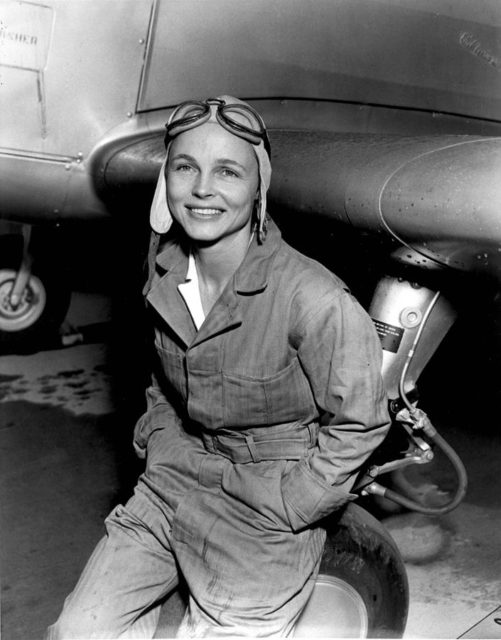
Wise remained close to the women she served with and saw them at reunions over the years. She did not know some of the women had come from wealthy families, because when they were in uniform everyone looked the same in a “zoot suit.” The experience formed a close bond between them all, and each woman recognized the incredible opportunity of being allowed to serve.
Wise values her status as a pioneer and symbol of strength for young women entering service today or in the future. She is quite impressed by what female pilots are accomplishing today, especially in combat. It serves as another example that women are able to fly military aircraft just as well as men.
While advising America’s young women and potential service members, Wise wisely tempers ambition with prudence, saying, “the military is not for everyone, but it offers a great opportunity to young women.”